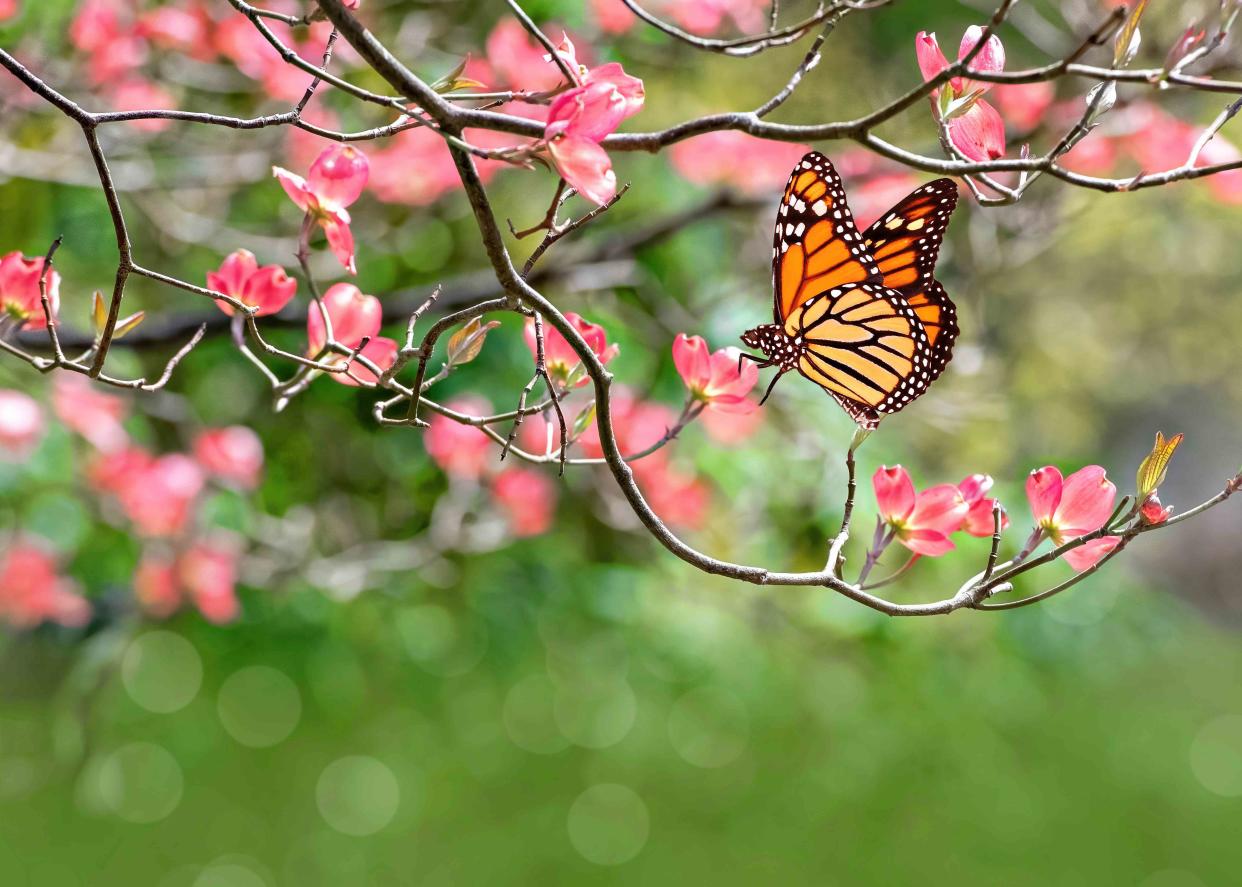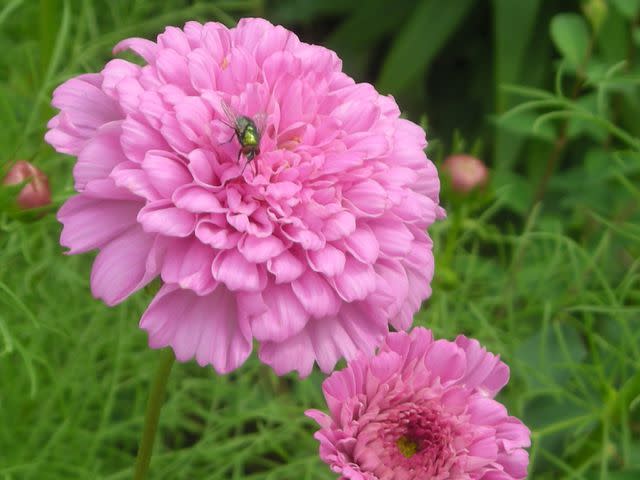All About Pollinators: What They Are and How to Support Them

Annmarie Young Photography / Getty Images
A pollinator is an insect or bird (or occasionally a mammal) that pollinates plants by transferring pollen from one plant to another. The movement of pollen grains from one plant to another is a way of sharing plant material that benefits reproduction and allows plants to produce food like apples, oranges, squash, walnuts, and berries. Some creatures, like honeybees, pollinate intentionally and as part of their own system of food creation, survival, and social structure. Others, like hummingbirds, do so inadvertently, simply by visiting multiple flowers to feed on nectar.
Why Pollinators are Important
Pollinators are an integral part of any ecosystem. Pollinators encourage plant growth and assist with maintaining diversity in the landscape. The vast majority of plants require some amount of pollination. Agriculture is especially dependent upon bees to pollinate the blossoms of trees and plants that produce fruits, vegetables, and nuts, and agriculture is a crucial component in both the food supply and the economy.

Peg Aloi / The Spruce
Common Pollinators in the U.S.
There are a number of common pollinators in the United States, and they are found in a wide variety of habitats, including rural and urban areas.
Monarch butterflies: Considered endangered now due to dwindling numbers, these once-plentiful butterflies are considered one of the most important pollinators. They enjoy milkweed, Asclepius (butterfly weed), and buddleia (butterfly bush), and planting these in your garden can provide important food sources for them.
Butterflies: Many varieties of butterflies are effective and beautiful pollinators. Some are attracted to very specific plants. Most butterfly species are declining in number mainly due to loss of habitat, so planting butterfly-friendly plants may be crucial to their survival.
Hummingbirds: Beautiful to watch, these elusive yet playful birds enjoy visiting a number of flowers including Agastache (hummingbird mint), nepeta (flowering catmint),
Bats: Bats are shy nocturnal creatures that eat many annoying insects (like mosquitoes) and generally benefit the local ecosystem a great deal. You can put a bat house in your garden to attract them. Though they behave a bit like birds, bats are actually mammals. They are important pollinators for certain food crops, including durian, dragonfruit, and African locust beans.
Beetles: Though some beetles, such as Japanese beetles or red lily beetles, can be pests in the garden, many of them are good pollinators. Beetles are known to be some of the earliest pollinators on earth, due to there being such a large number of beetle species in the prehistoric era. They also tend to chew leaves as part of their pollinating process.Wasps: Though their stinging ways can make them a nuisance, wasps still manage to be very effective pollinators.
Bees: There are many types of helpful pollinating bees, including honeybees, carpenter bees, sweat bees, bumblebees, and others.
Moths: Similar to butterflies, many moths are nocturnal and will pollinate plants after dark. Moth larvae are also important sources of food for many birds, bats, frogs, toads, and lizards, forming a crucial part of a healthy ecosystem.
Mosquitoes: Yes, these biting machines and vectors for spreading disease are actually good for something: pollinating!
Flies: Perhaps not everyone's favorite insect, flies are nevertheless useful as pollinators for a wide variety of plants. Flies also breed quickly, so the density of their numbers makes them common pollinators in many areas.
Lizards: In some areas, like islands with unique ecosystems, lizards become very important pollinators, as important as birds and insects.
Other Pollinating Mammals: In addition to a variety of bat species, there are a few other mammals that serve as pollinators, including certain types of shrews, possums, lemurs, and flying foxes.
How to Support Pollinators
There are a number of ways you can support pollinators in your area.
Create habitats for pollinators. Letting a few weeds grow in your lawn, and letting some parts of your property go a bit wild, can help attract a greater diversity of pollinators.
Avoid using toxic herbicides or pesticides. These products can disrupt insect behavior and have been linked to colony collapse disorder. There are many organic methods for addressing unwanted weeds and pests.
Plant pollinator-friendly plants. Plants that attract bees, butterflies, moths, hummingbirds, and other birds will bring these pollinators to your yard and create a hospitable environment for them to flourish and find food.
Avoid bright outdoor lights at night. Bright outdoor lighting can cause confusion for migratory birds, many of whom play their part as pollinators. Try using solar-powered lights or motion sensors to cut down on too much unnecessarily bright illumination.
Support local farmers and beekeepers. Supporting the work of organic farmers and beekeepers by buying their products can help ensure efforts to cultivate healthy habitats for pollinators.
Read Next: What to Know About Pollinator Gardens

